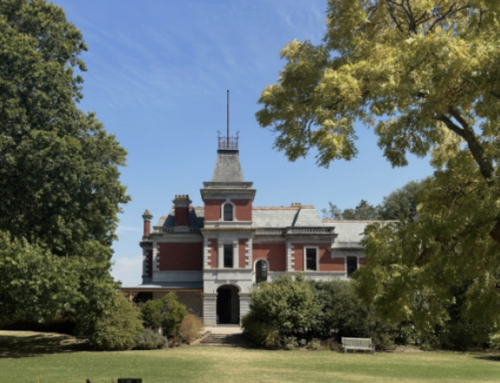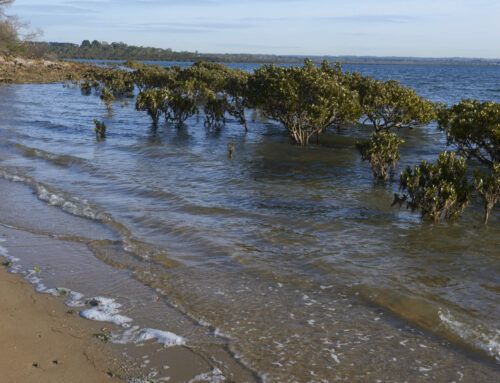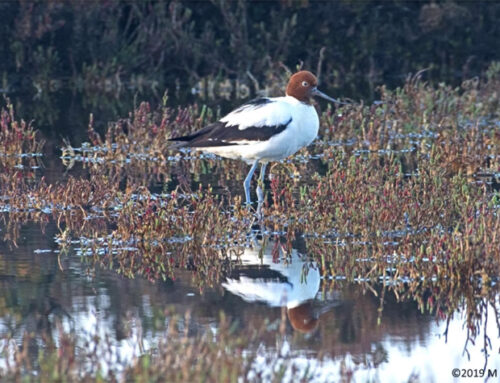What Is Happening and Why Is It Urgent?
Both APA and AGL have referred their projects for approval to the federal government under the Environment Protection and Biodiversity Conservation Act of 1999 (the EPBC). Based upon these referrals, and public comments and objections, the government will decide whether no further study is necessary (thereby giving the projects the go-ahead), or decide that significantly more study needs to be done before the projects can proceed.
We want to help you raise any objections to one or both of these referrals by making a public submission with your objections. The referrals themselves are available on the EPBC Public Invitation Page and are designated as 2018/8297 (APA Pipeline) and 2018/8298 (AGL Regasification Installation). However, the documents are extensive and the Act itself may be difficult for most people to fully read and understand. So, time is of the essence, and we want to help as many people respond with their objections as possible. The deadline for both is October 24th, 2018!
Who Can Help?
You can! The EPBC is an invitation for public comment.
The EPBC Act assures that the public has a voice, and the government assures us that all public comments will be considered. But it is also very specific and is concerned only impact on the environment, so your comments need to focus on those specific issues to be relevant to the decision-makers. Comments relating to the economic situation, residents, jobs opportunities and other factors won’t have much weight.
How Do I Submit?
The quickest way to submit an objection is to email it to epbc.referrals@environment.gov.au. However, the way you prepare your submissions is important:
- Make sure you read the following section “What Do I Say In My Objection?” first.
- For the best results, take the time (thank you) to use one of our templates and prepare a written submission. Below, we have a Word Document Template for the AGL FSRU referral and a separate Word Document Template for the APA Pipeline referral. Remember they are two separate projects.
- If you would like some help, use our Facebook page or our Contact form to ask for help. We can’t promise you we have time, but we’re very keen if we do.
- Save your Word Document and then email it to epbc.referrals@environment.gov.au. Your email must be sent before October 24th, 2018 or it will not be accepted.
Template Letters
The more personal and detailed your letter is, the better, but we have prepared two template letters for you to give you a start. Be sure to remove all yellow “change me” text or replace it, and remove and replace any other parts of the letters with information and objections of your own. We don’t want to deluge the department with form letters.
- Template Letter for AGL Crib Point LNG Import Terminal (2018/8298): Download HERE.
- Template Letter for APA Pipeline (2018/8297): Download HERE.
What do I Say In My Objection?
We need as many people to prepare a submission as possible, especially if you have some knowledge of the bay, the marine environment, or are particularly good at finding problems and errors in scientific studies. But, you don’t have to be an expert. Being concerned is sufficient, but for the submission to have impact, it must target specific concerns the decision-makers are tasked to consider under the EPBC act itself.
Some of the important topics relevant to the AGL Crib Point project are:
- Any significant impact to the Westernport wetlands (Westernport has the status of a Ramsar wetland, and Ramsar wetlands are specifically mentioned in the EPBC act itself).
- Any significant impact to migratory species which live in and around the bay.
- Any significant impact to threatened species and ecological communities.
- Any doubts as to whether AGL and APA can uphold their regulatory requirements. Concrete feedback is required, not opinions. So, any AGL or APA past infractions which are published and can be referenced are useful.
Note the phrase significant impact. It is a very important phrase to the decision-makers. When considering your objections, this is the way the government defines “significant impact”:
A ‘significant impact’ is an impact which is important, notable, or of consequence, having regard to its
context or intensity. Whether or not an action is likely to have a significant impact depends upon the
sensitivity, value, and quality of the environment which is impacted, and upon the intensity, duration,
magnitude and geographic extent of the impacts. You should consider all of these factors when determining
whether an action is likely to have a significant impact on matters of national environmental significance.
In addition, when they say “is likely” they don’t mean that it has to be greater than 50%. So long as there is any reasonable chance, even a slight impact will be considered, so long as it is “real” and not a remote possibility.
To make sure your comments are effective, here is a checklist for you to consider:
- Clearly reference the referral (EPBC numbers given above and proposal title) in your submission. You can find the list of Public Invitations at This Link and can easily locate the APA and AGL referrals themselves.
- State clearly whether, and how, you believe the proposal would have a significant impact on matters protected by the EPBC Act as per our guidance here.
- If you believe the information in the referral is misleading or incorrect, you should state the reasons why and provide correct information, if available.
- Give the source of any key information used in reaching your conclusion.
- Provide clear contact details if the Department needs to get in touch with you to seek clarification.
- Provide comments by the due date. If your comments are going to be late, please contact the Department before the due date, and advise of your intention to provide comment, and the date the comment will be provided. The Department will advise you if the comments can be accepted.
What Am I Objecting To?
Your objection will have more weight if you do some homework and understand what AGL and APA are doing, and attempt to read the contents of their referral and target your objections to specific points. We know this is can be a lot of reading, so we’re including some help, below in “Research and Information Links”.
As a rule:
- Even if you don’t fully read the referrals, you can object based upon your own knowledge or experience of how any such industrial projects can impact the environment or wildlife. The more specific you are, and the more you can provide some concrete references (perhaps to other projects in Australia), the more weight it will have.
- The referrals contain complex documents filled with scientific material and boilerplate responses the government requires, but if you read them, and find errors, inaccuracies, or false assumptions, these are powerful objections. Such objections raise doubts in the decision-makers minds about the quality of the AGL and APA submission in general.
Research and Information Links
Many people have pointed out some good articles which contain sound arguments against AGL’s plan. One useful link is to the Victoria National Parks Association. Though it was published in 2015 after the Hastings container port was put on hold, many papers provided at by VNPA may give you some ideas about areas of environmental sensitivity which may be affected.
However, in making your submission, the most important documents are the documents which are part of the actual referrals by AGL and APA to the government. These are the documents that you are objecting to and commenting to. Time to get your cup of coffee…
For the AGL referral (2018-8298), here are the documents:
- 2018-8298 Referral. (This is the referral document itself, referred to the government by APA.)
- 2018-8298 Impact Table 2.4.1 (This is the first part which lists AGL’s description of the impacts of the project.)
- 2018-8298 Impact Table 2.5.1 (This is the second part of the impact descriptions.)
- 2018-8298 Marine Impact Protected Matters Assessment (This describes the detailed list of species and government regulations which protect them).
- 2018-8298 Effects of Cold-Water Discharge on Marine Ecosystem (This is about the notorious 450 Million Litres of seawater, and describes AGL’s analysis which deems it “acceptable risk”).
- 2018-8298 Assessment of Ramsar Selection Criteria (This document from AGL describes the Ramsar criteria and indicates that they believe they will have no impact.)
- 2018-8298 Map of the Ramsar area (A map which makes it obvious that the waters affected by the project are well within the boundaries of the Ramsar area.)
- 2018-8298 Aboriginal Heritage Assessment (This document describe how AGL believes they there are no issues with Aboriginal Heritage areas).
- 2018-8298 Import Jetty Consultation Summary (This document is AGL’s description of the community and the consultation process.)
- 2018-8298 Joint APA/APA Cumulative Impacts Assessment (This document considers both projects and describes the beliefs of APA and AGL about what the longer-term impacts of the project may be.)
- 2018-8298 Flora and Fauna Assessment (Describes the belief by AGL that no flora or fauna will be affected by the project.)
- 2018-8298 Plume Modelling of Discharge from LNG Facility (Describes how current flows in the bay and concludes that the 450 Million Liters of discharge will not cause any problems.)
- 2018-8298 Indicative Mixing Zone (A map which many believe underestimates the marine areas which will be subjected to the outflows from the FSRU factory ship. Some facts are needed to back this up.)
- 2018-8298 Assessment of Biological Entrainment into Heat Exchange System (This reports how the number of marine lifeforms killed or trapped in the heat exchanger won’t be beyond acceptable limits.)
- 2018-8298 Chlorine in Sea Water Heat Exchange Process (Describes how the seawater will be chlorinated and how in AGL’s opinion, the impacts will be minimal.)
- 2018-8298 Effects of LNG Facility on Sea Level and Seabed (Describes AGL opinion that there should be minimal impact on the level of water in the wetlands or effects upon the seabed.)
- 2018-8298 Hydrology Impact Assessment (Hydrology is the assessment of how water flows may affect flooding, ground water, and water for irrigation and human consumption).
- 2018-8298 Contaminated Land Assessment (Examines existing contamination and concludes that they’ll probably need a plan to deal with it, which is not presented in the publication.)
- 2018-8298 Historic Heritage Assessment (Concludes that there will be no impact on the heritage value of any areas adjacent to the project, or within the bounds of the project itself.)
- 2018-8298 AGL Environment Policy (A letter from the [then] CEO talking about how “committed they are” to the environment)
- 2018-8298 Project Site and Key Features (A map showing affected and adjacent areas).
For the APA referral (2018/8297), here are the documents:
- 2018-8297 Referral. (This is the referral document itself, referred to the government by APA).
- 2018-8297 Significant Impact Assessment (This document concludes that there will be no “significant impact” in APA’s assessment).
- 2018-8297 Letter from the APA CEO Stating Health, Safety and Environment Policies
- 2018-8297 Map of Proposed Pipeline Route (This is the first clear indication of the actual route rather than a very rough estimate.)
- 2018-8297 Details of Land Ownership (This indicates, parcel by parcel, the properties affected by the Pipeline).
- 2018-8297 Part 1 of Proposed Easements (This, and the following two parts, are the best reference so far of the highly detailed route of the pipeline.)
- 2018-8297 Part 2 of Proposed Easements
- 2018-8297 Part 3 of Proposed Easements
- 2018-8297 Part 1 of Construction Methodology (Like the preceding three sets of maps, these three give a full parcel-by-parcel description of the route, along with details about where trenches and other types of construction will be performed).
- 2018-8297 Part 2 of Construction Methodology
- 2018-8297 Part 3 of Construction Methodology
- 2018-8297 Part 1 of Ecological Mapping (A 3-part set of maps that indicates in great detail the ecological features of areas traversed. Geesh, these APA people love their maps!)
- 2018-8297 Part 2 of Ecological Mapping
- 2018-8297 Part 3 of Ecological Mapping
- 2018-8297 Excavation Plan – Warringine Creek (These plans detail how pipes will be run underneath waterways).
- 2018-8297 Excavation Plan – Kings Creek
- 2018-8297 Excavation Plan – Watson Creek
- 2018-8297 Excavation Plan – Toomuc Creek
- 2018-8297 Excavation Plan – Warringine Park
- 2018-8297 Flora and Fauna Report (This is a comprehensive report on all affected areas and the environmental impact. It is obvious that APA did much more work to do on this than AGL did, and far more opportunities to find problems).
- 2018-8297 Flora and Fauna Report Maps
- 2018-8297 Flora and Fauna Report Maps (More maps!)
- 2018-8297 Southern Brown Bandicoot Study (Undertaken to determine impact on the species.)
- 2018-8297 Growling Grass Frog Study
- 2018-8297 Aquatic Survey of Affected Waterways and Marshlands
- 2018-8297 Acid Sulfite Soil Report
- 2018-8297 Acid Sulfite Soil Report Accompanying Maps (We knew they’d show up.)
- 2018-8297 Desktop Historical Assessment (“Desktop” means that they have made the assessment without any actual site visits or investigation, purely based upon available data and reports.)
- 2018-8297 Aboriginal Cultural Heritage Desktop Assessment (See above about “Desktop”)
- 2018-8297 Pipeline Project Hydrological and Hydrogeological Impact Assessment (Does not necessarily conclude that there are no impacts but makes judgements about whether they are acceptable.)
- 2018-8297 Pipeline Hydrological Assessment Maps Part 1
- 2018-8297 Pipeline Hydrological Assessment Maps Part 2
- 2018-8297 Pipeline Hydrological Assessment Maps Part 3
- 2018-8297 Joint APA/APA Cumulative Impacts Assessment (This document considers both projects and describes the beliefs of APA and AGL about what the longer-term impacts of the project may be.)





